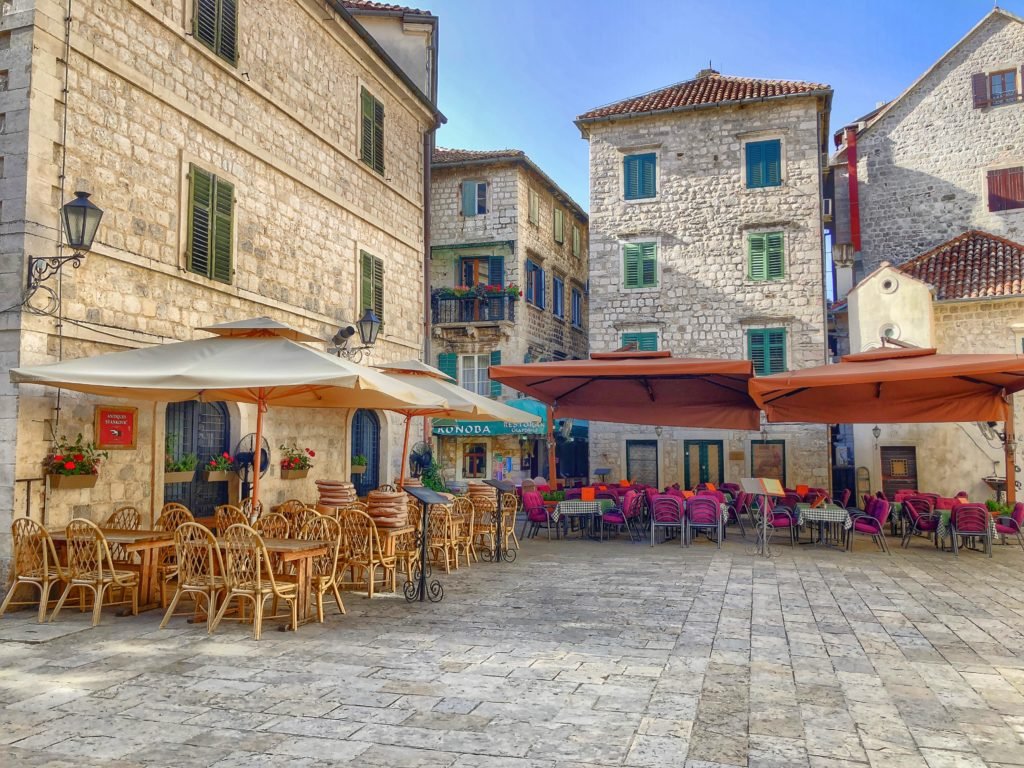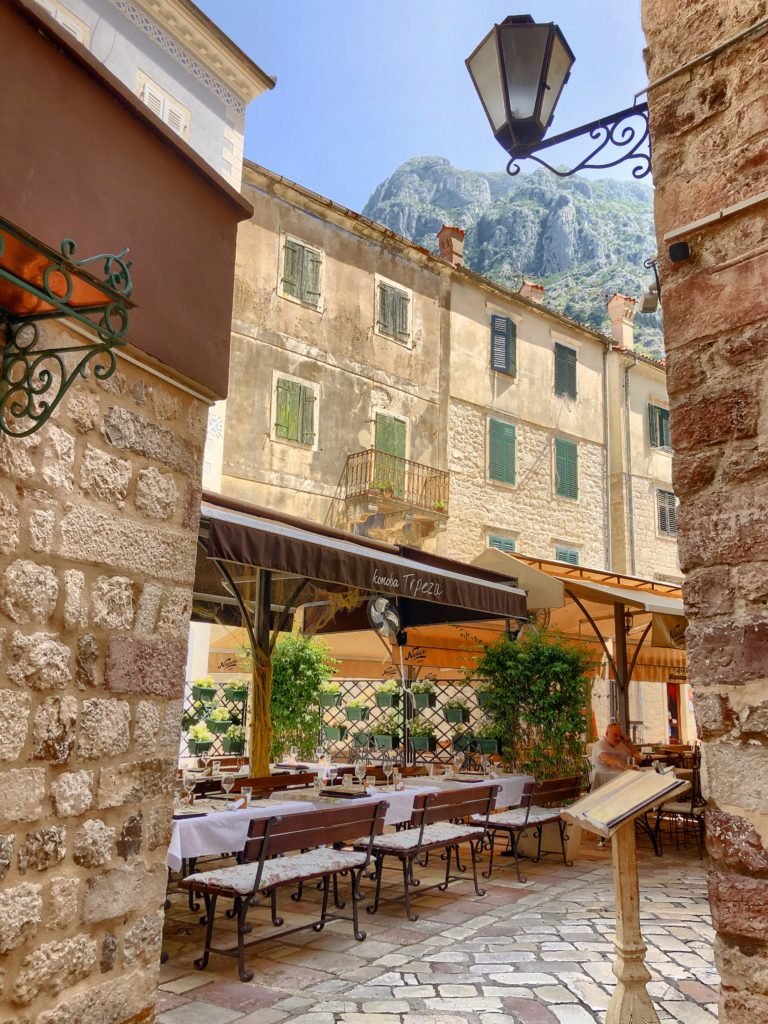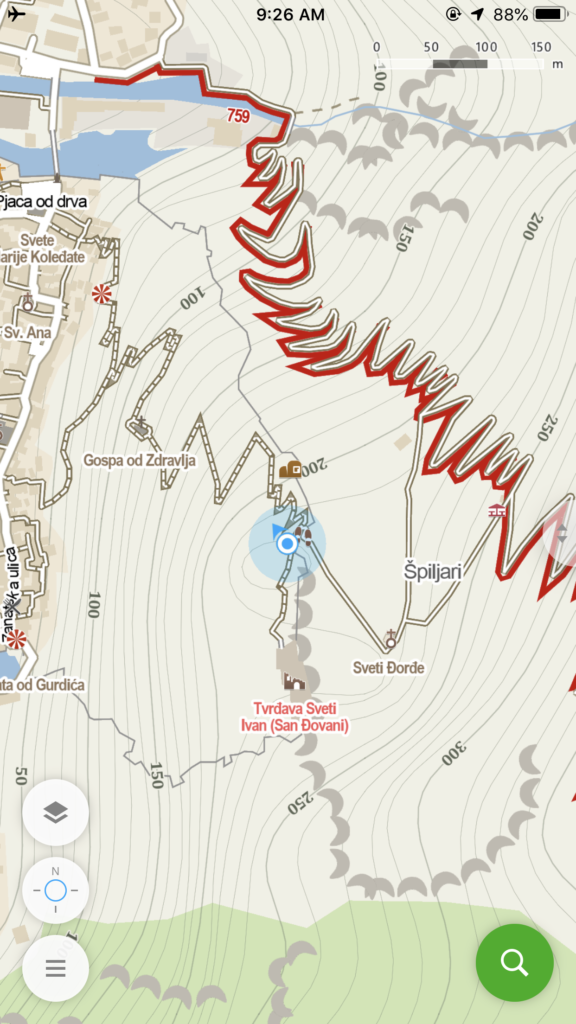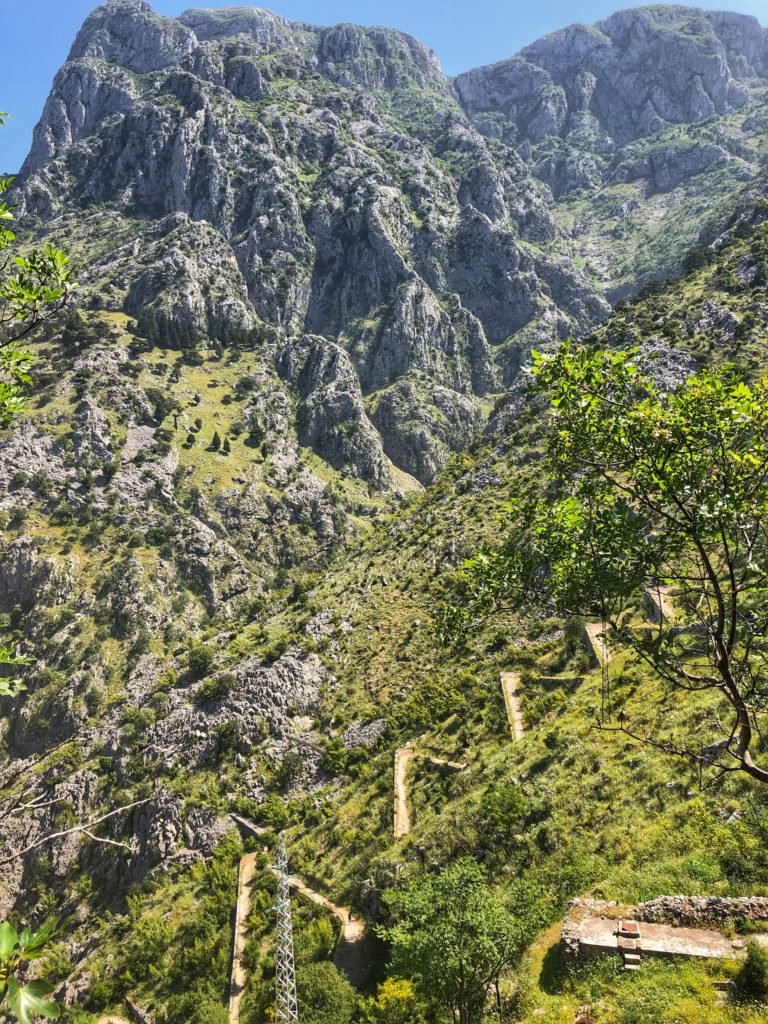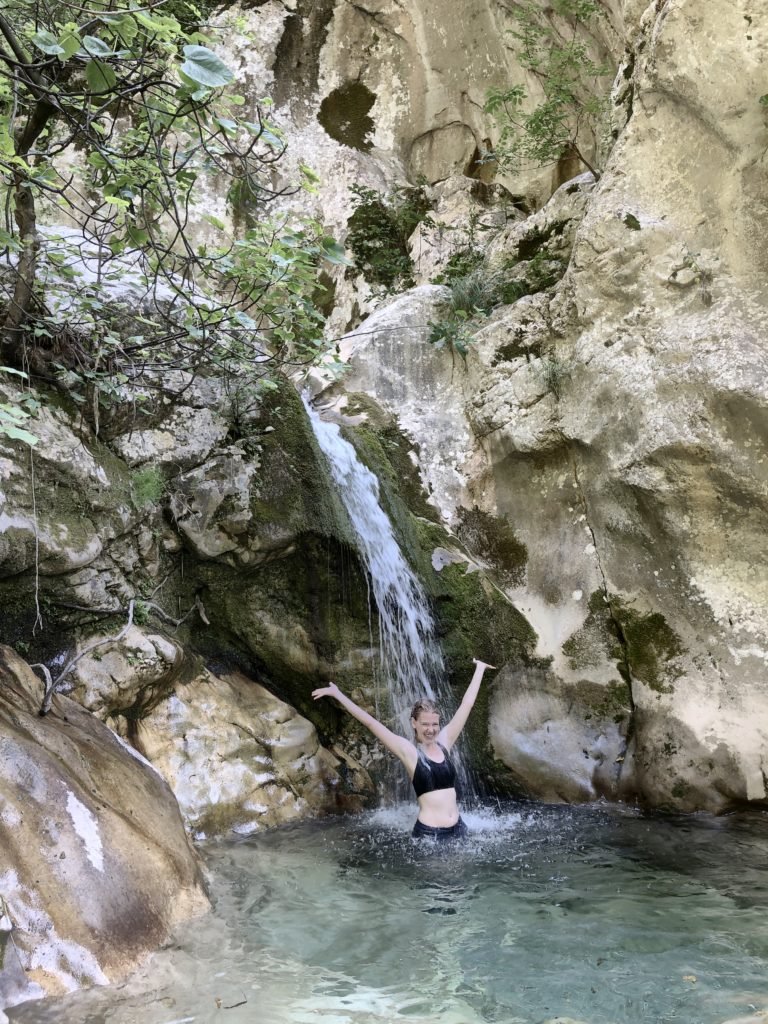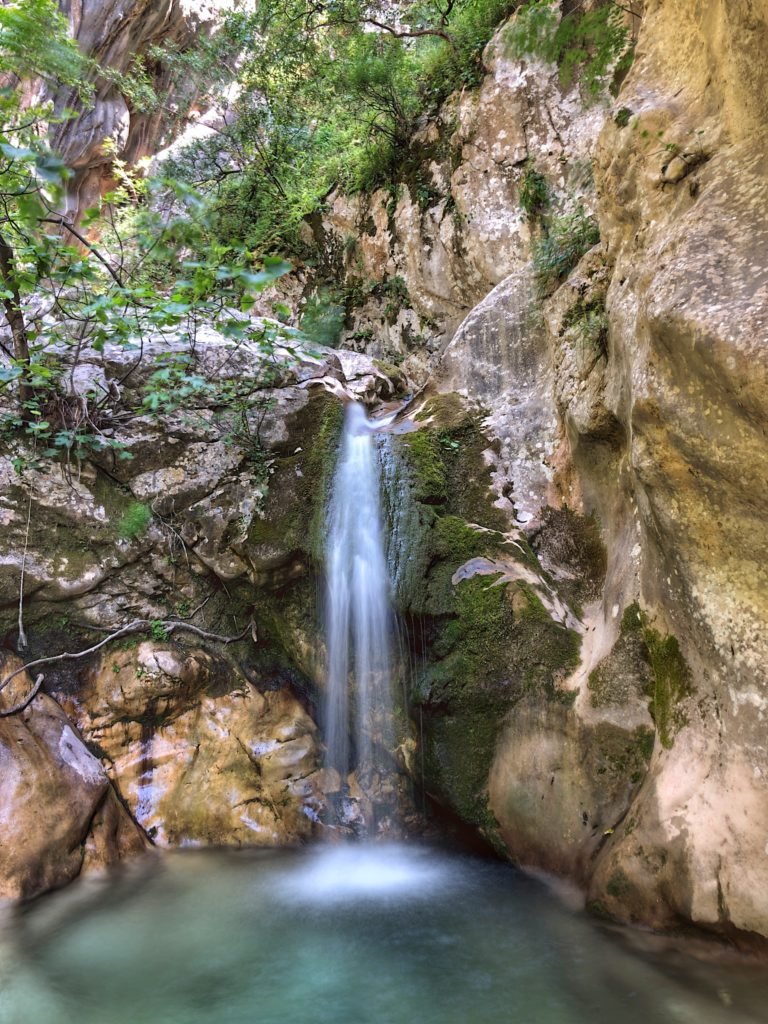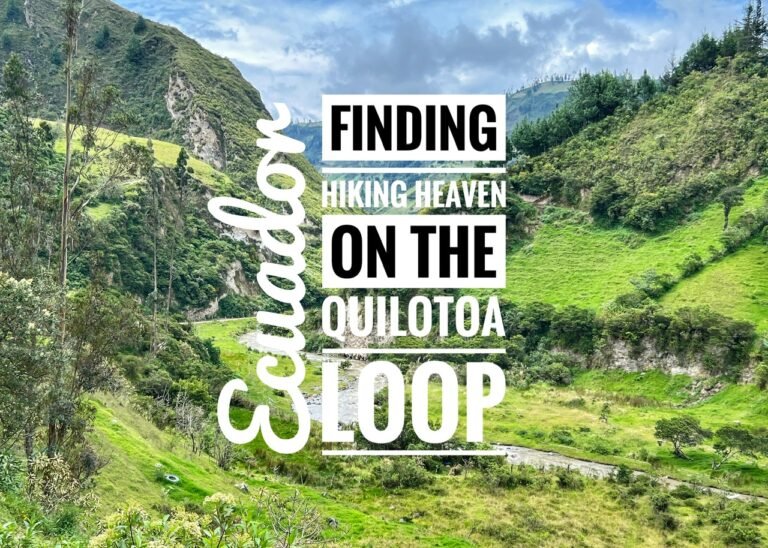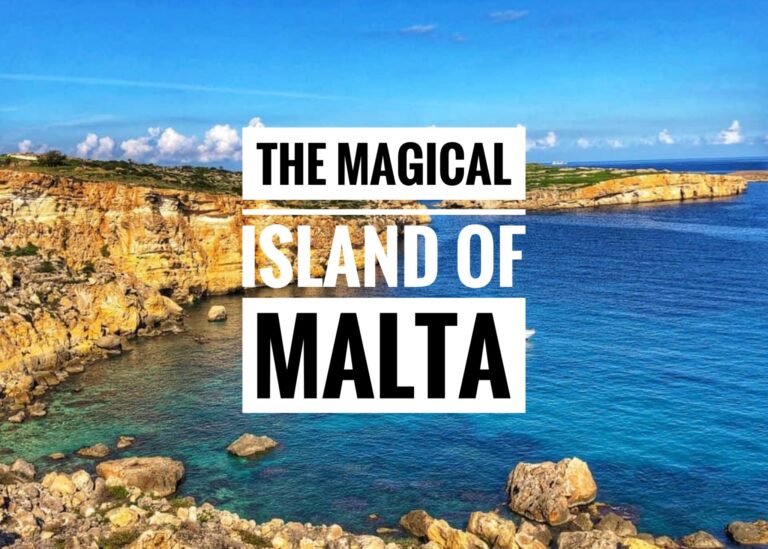
As we bused our way north into the Bay of Kotor, or Boka for short, we held our breath a little knowing things were about to change. June was in full swing and it was high tourism season in what is now a… very touristy place. But we just had to go to Kotor! This fairytale medieval town has been on our bucket list for years and it’s been voted as one of the most beautiful bays in the world. That said, we vowed to also do everything we could to go against the flow of the crowd to truly embrace the magic.

Exhibit A.
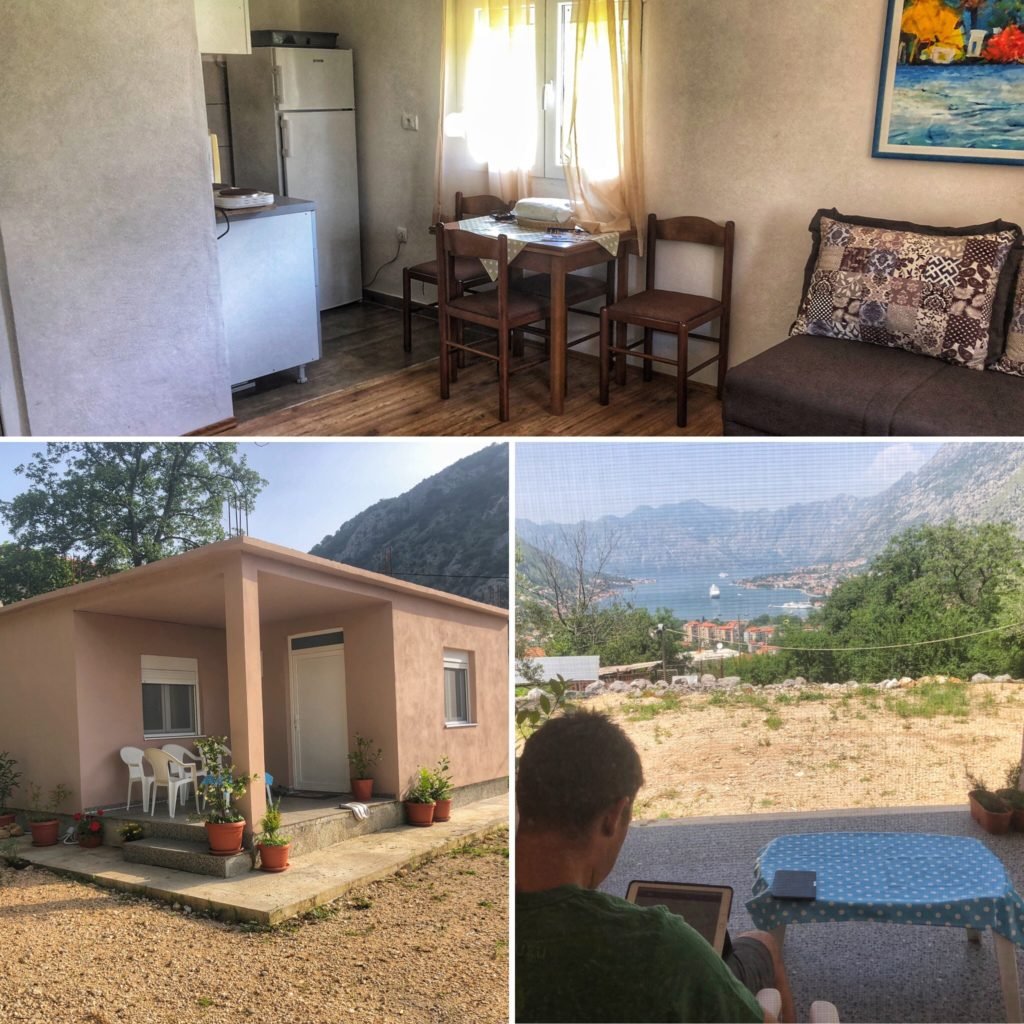
So, firstly, we chose to base ourselves far from the hubbub of Old Town. We opted for a “tiny home” shoebox we found on Airbnb for $35/night. It was a perfect place to make all our meals in, get some work done, and save money as well.
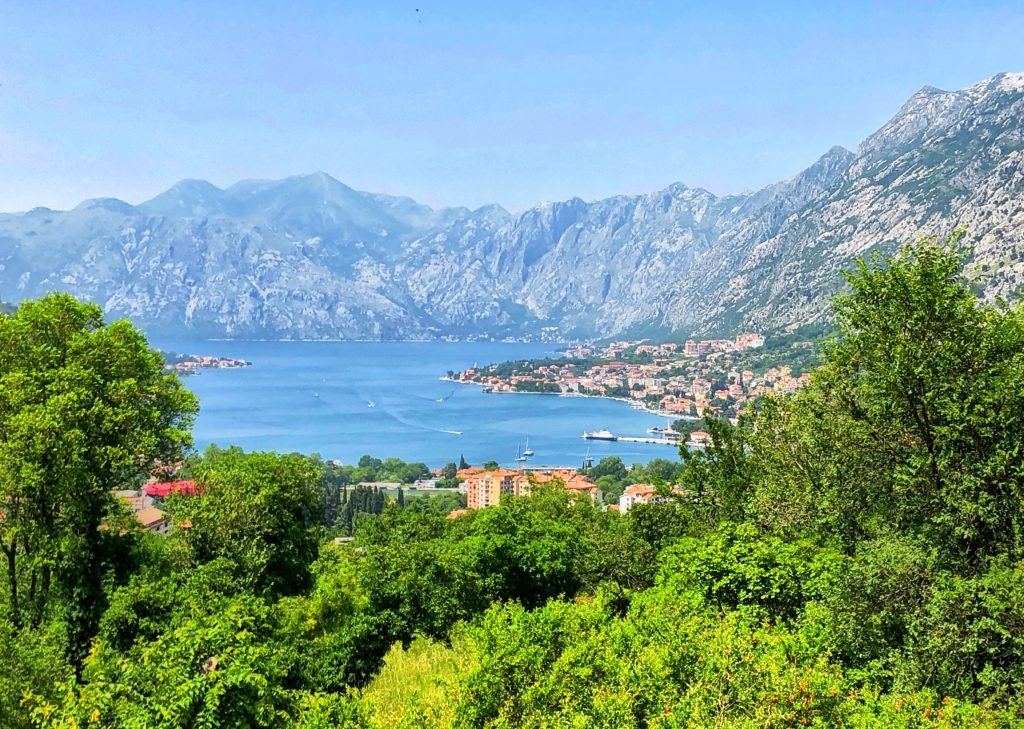
It featured an “energizing” 30-minute walk up and down the giant hill from town and a tremendous view of the bay. This area is often know as the “southernmost fjord” which for the record is fake news, as it was not carved by glaciers. Instead it was carved in much the same way as San Francisco Bay or Sydney Harbor…created when when rising sea levels drowned an ancient river valley (called a ria for our science nerds.)

Start your against-the-flow travels of Old Town by getting up early…before 9 am is usually safe to avoid the cruise ships. Head toward the Gurdich, or South Gate, to the city which is always less crowded and much more picturesque with its castle walls and translucent spring water than the main gate.

Walking the streets of Old Town early definitely has its advantages. Boka has been a UNESCO world heritage site since 1979 and a thriving community since around 230 BC. Originally part of Yugoslavia, Montenegro only became its own independent country in 2006.
According to local legend, it says that Kotor was built with the help of a fairy named Alkima. And sure enough…it evolved into a fairytale town which completely captures the magic of the Venetian empire which ruled for 400 years. Ancient alleyways, cafes galore and secretive staircases make it a pleasure to stroll for hours.
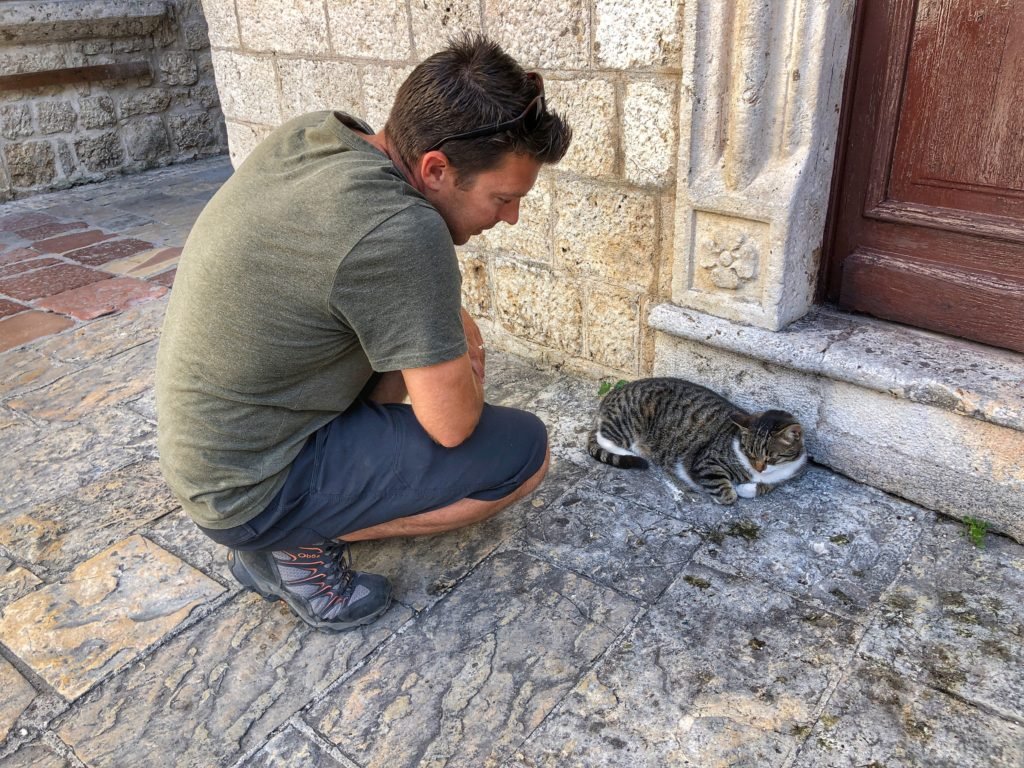
Oh, and there’s also no shortage of felines here. Kotor is such a cat lover’s paradise there’s even t-shirts, shops and a museum dedicated to the “Cats of Kotor.” Mandy almost bought one, but then decided she’s not that big of a cat lady…yet.

Although this picture at the cat park in Antalya, Turkey begs to differ.
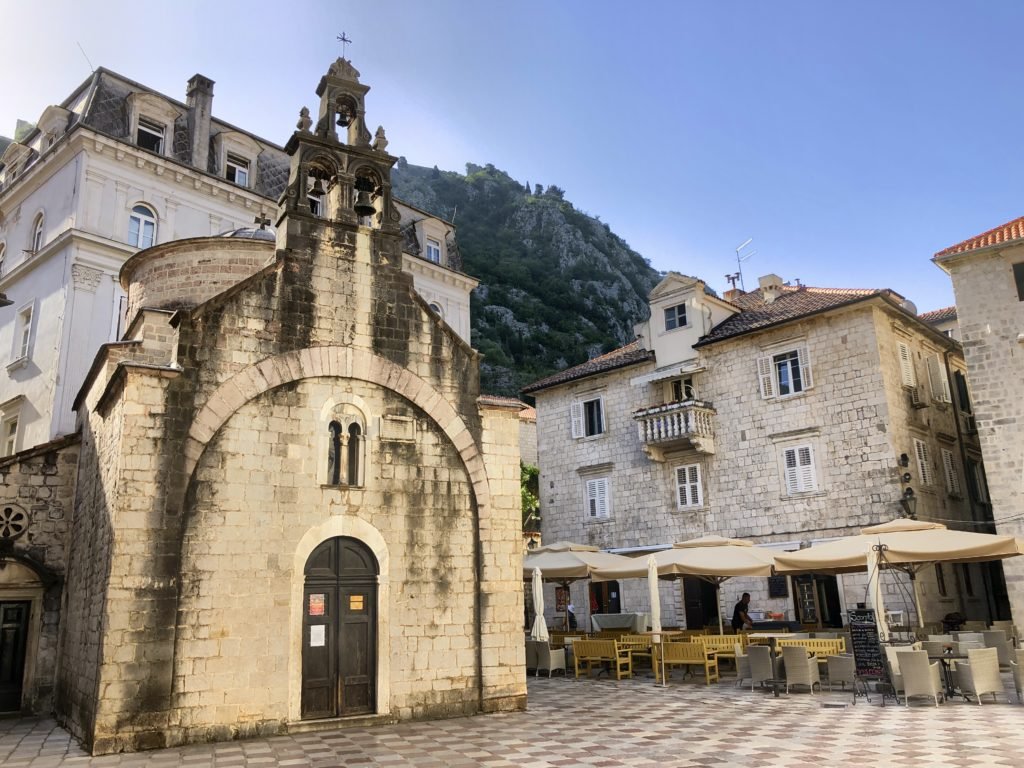
Our favorite church in Old Town, the Church of the Holy Spirit.
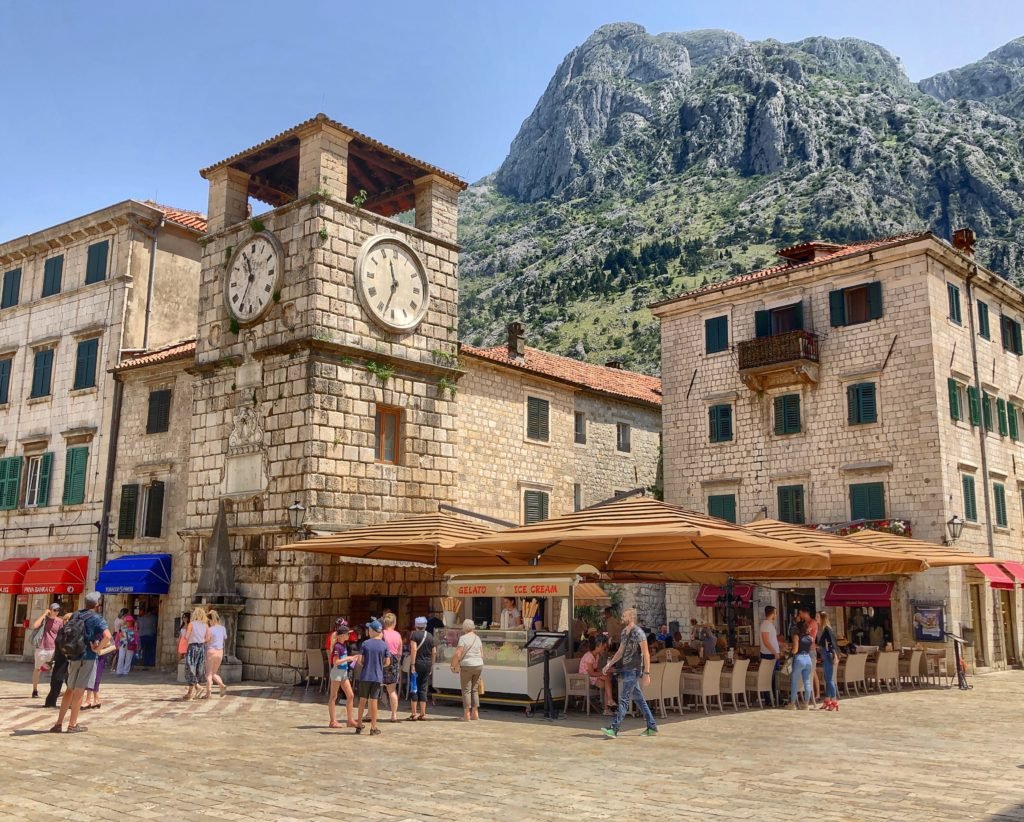
One of the main symbols of Kotor is the clock tower built in 1602. It’s just opposite the main, or Sea Gate. Now to share some of our off-the-beaten path adventures in Kotor…
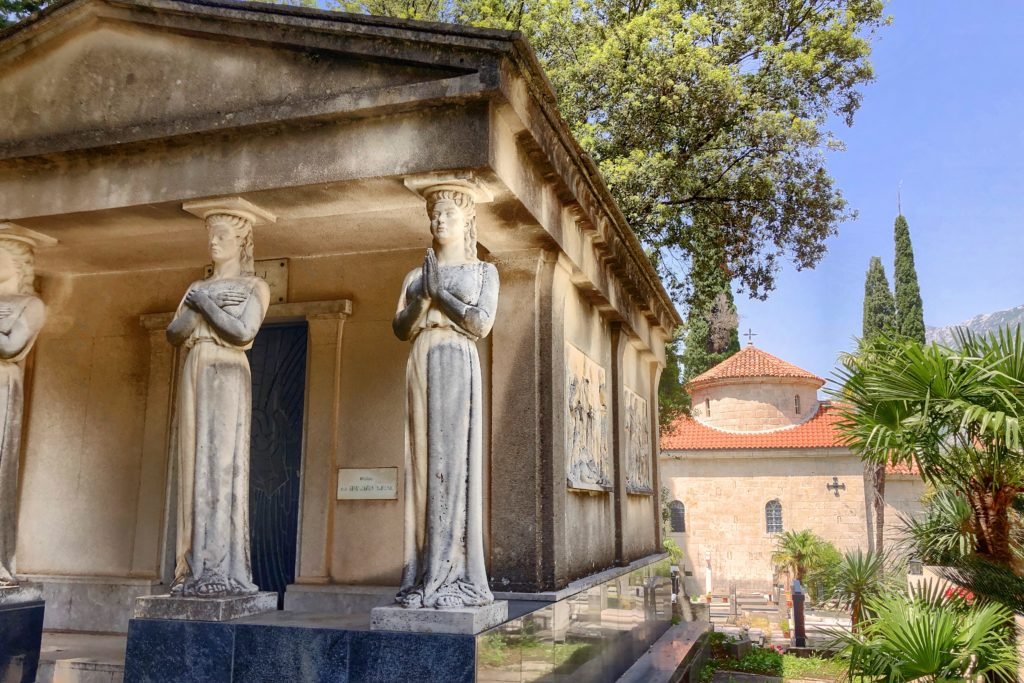
Groblje Skaljari Cemetery and Church: Just south of the main bus station is this beautiful gem. It’s very worth taking a few minutes to stroll through its serene tree-lined walkways and taking in the tranquility of the mausoleums and tombstones.
Ladder of Kotor to Castle of San Giovanni: One of the must see activities in Kotor is climbing to the Castle of San Giovanni to receive sweeping Instagrammable views of the 17-mile long bay ringed by mountains. But this view, comes with a price…in monetary expenditure (8€/ticket) to physical exertion up the 1350 stepped wall, to dealing with the crowds. So why not meander up the free back way, on the Ladder of Kotor trail, instead?
This ancient route used to be the only connection between Kotor and the old capital of Cetinje. To get there, go to the north edge of Old Town and cross the bridge from the gate. In about five minutes turn right and follow the road to a fence, which takes you back across the water (or dried canal) and up the alternative way to zig-zag up in a more gentle way to the castle. It takes about an hour. We used our Mapy.cz app to get there and had no issues, but it’s also on google and clearly signposted with red arrows once you get on the trail. In fact, you can even continue up this trail for even more dramatic views of the bay. But it was getting pretty hot, so we chose to take the first fork to the right and continue to the castle.
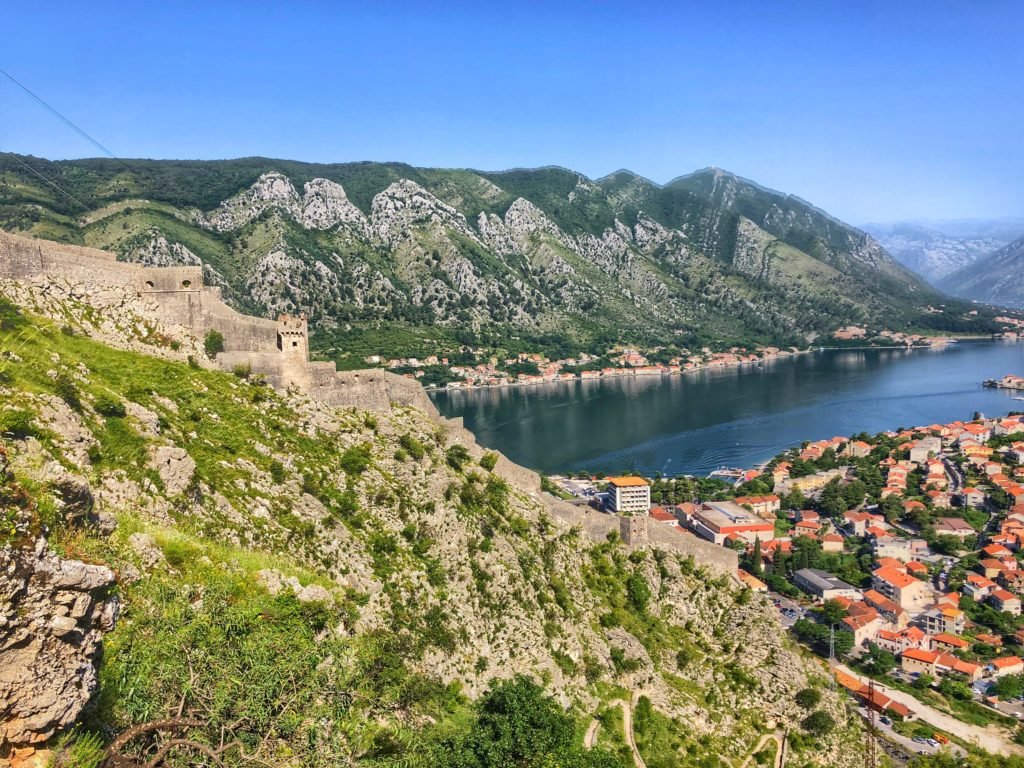
The wall and stairs as viewed from the alternative route. With each step, the views got more and more delicious. Plus, we weren’t winded from stair exertion like everyone else. <Insert evil giggle.>

Another great thing about the back way is stumbling upon the ancient Catholic Chapel of St Ivan. We knew about this church having read Francis Tapon’s thought provoking book where he visits all the countries of Eastern Europe called “The Hidden Europe.”

Inside the church. In his book, Tapon sleeps in this church (we believe) twice. Once during a torrential rainstorm. Highly recommend this guy’s witty and educational prose.
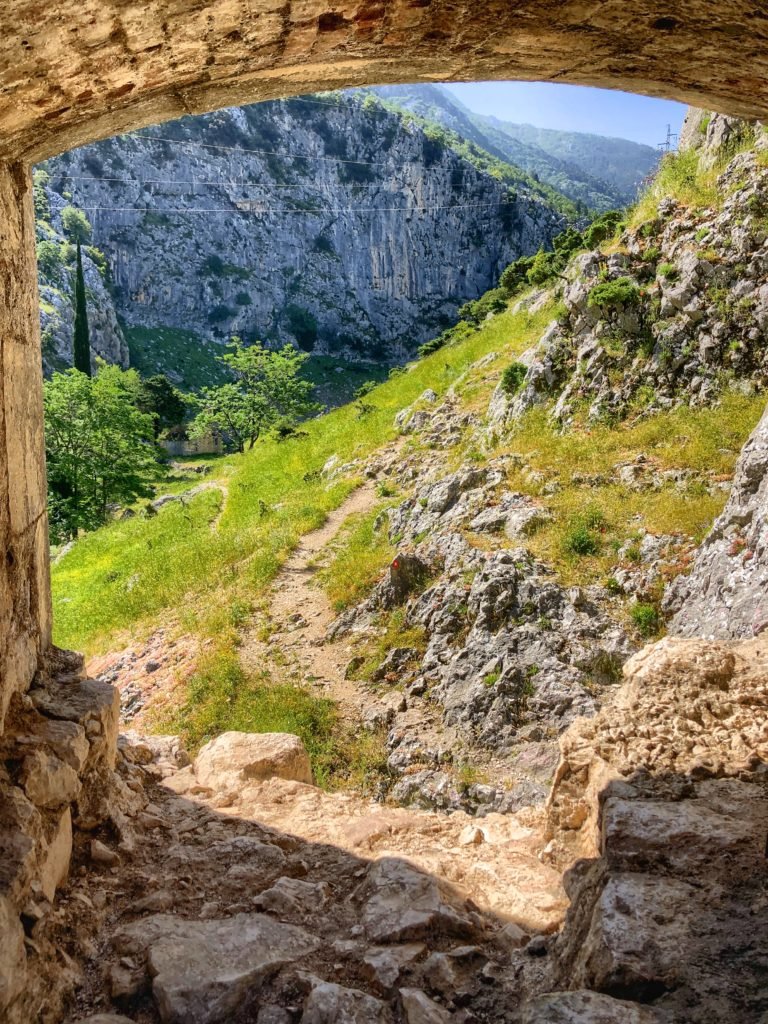
This church is also where you make a sharp right to meet up with the wall by climbing through a little portal. If you are coming from the stair side, you can also visit the little church through the same portal.
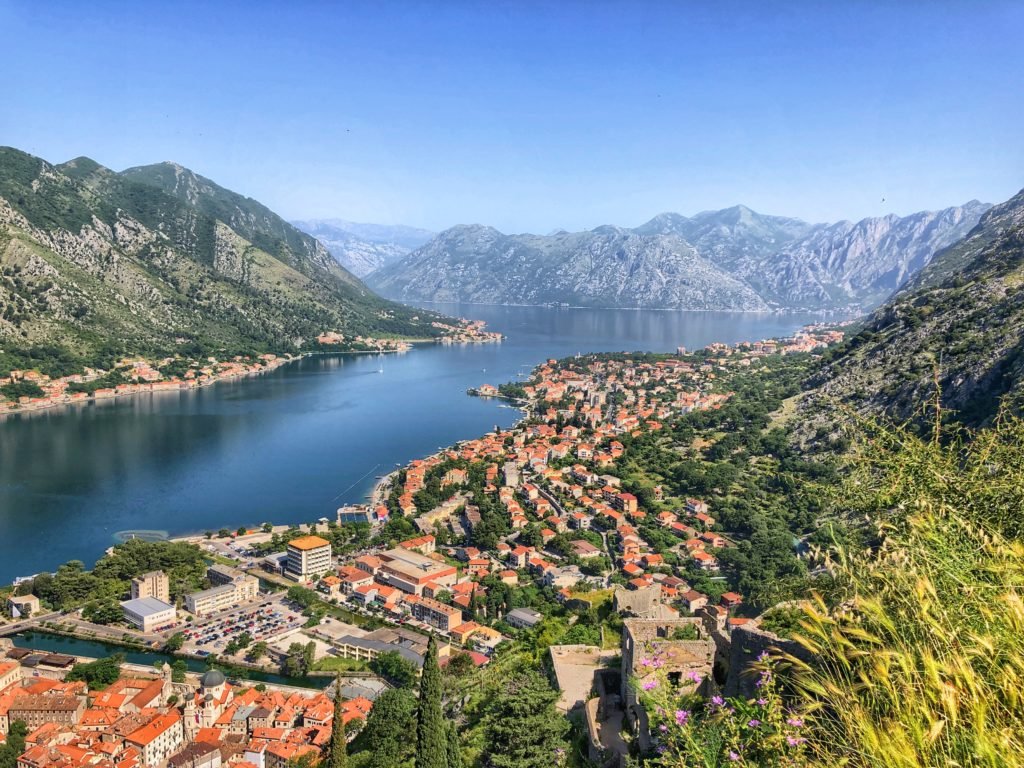
Climbing through the portal, you are greeted with this wonder.
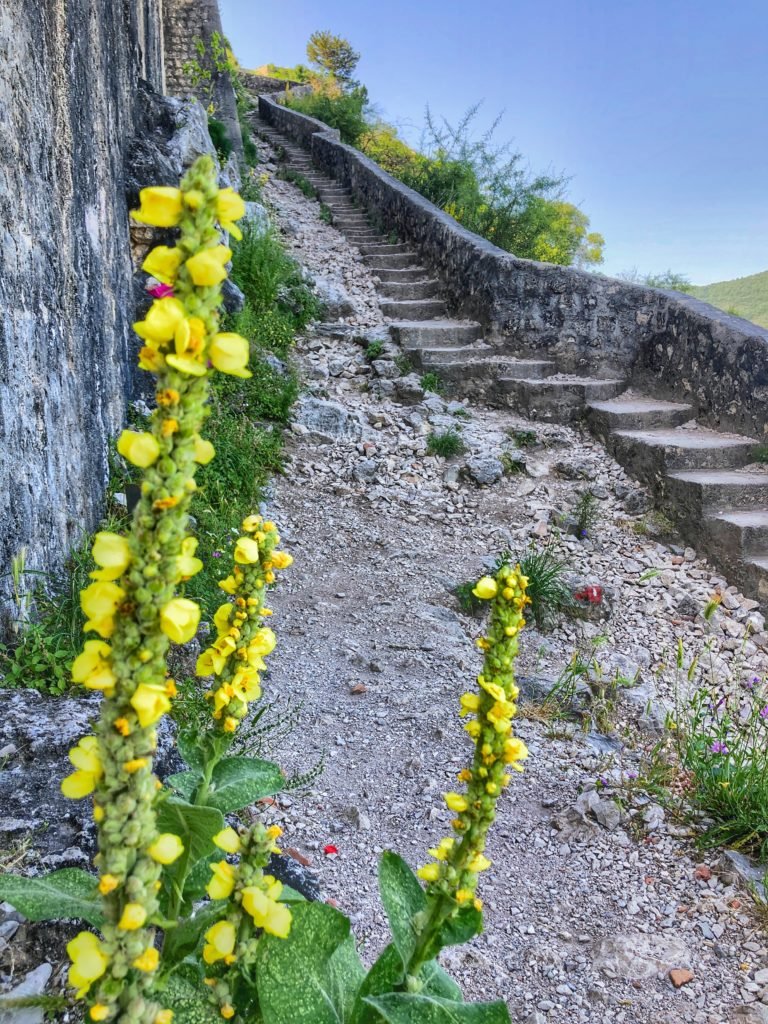
And this. Somewhere around stair number 1100 is where you join the stair-suckers to the top. You can also cruise back down the stairs (free with “admission”) if you don’t want to take the trail back down for some alternative views.

Arriving to the castle walls, it’s time for a snack break to take in this stunning panorama.
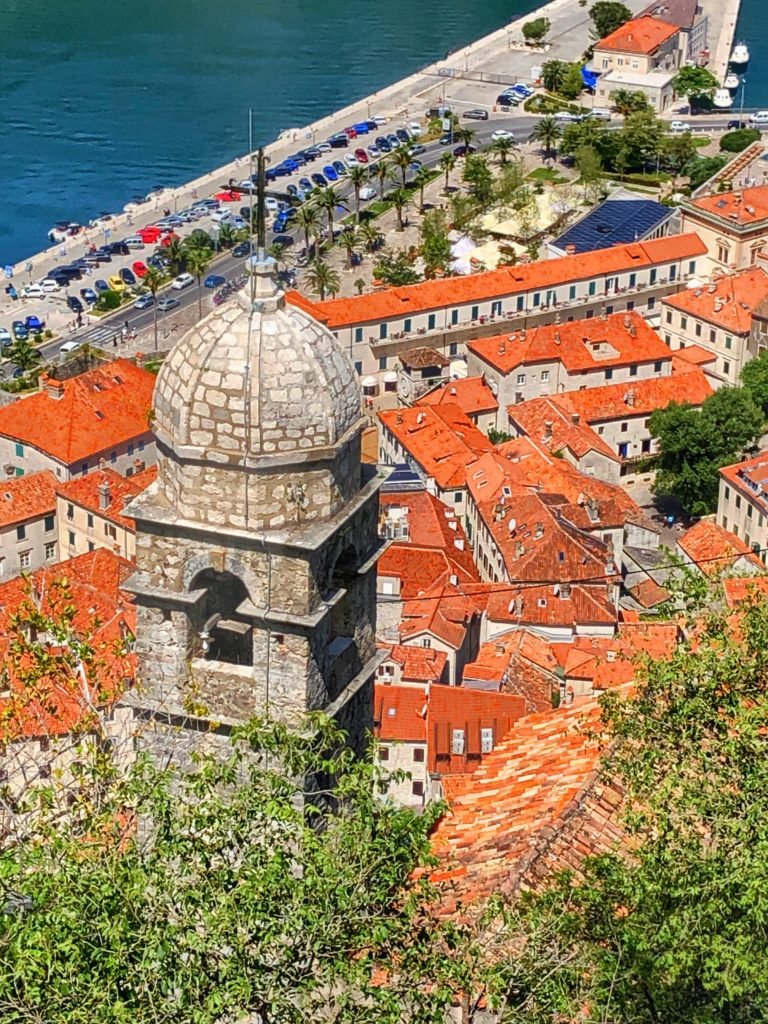
Gazing into the triangle shaped Old Town below. Damn, is she pretty.
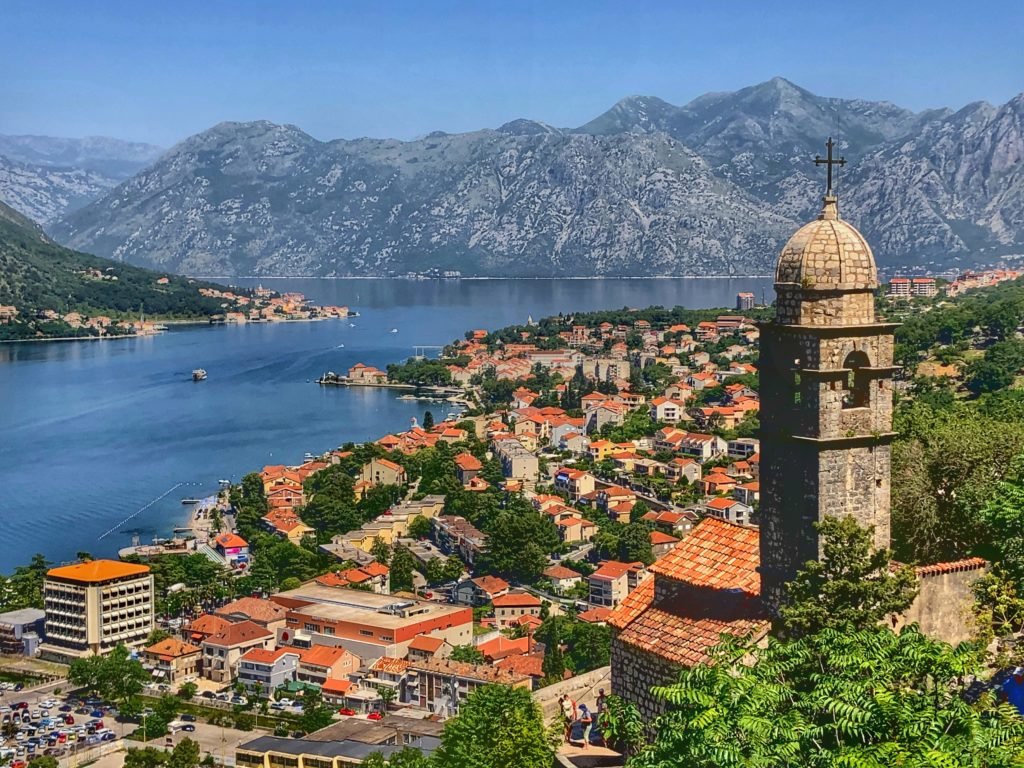
Fortunately this one of of the less hazy mornings we were there. Haze is quite common during summer mornings over Boka.

Canyoning in the Gorge: Next, we made another free adventure to cool off by canyoning through the emerald-hued gorge where we were greeted with a plethora of waterfalls and delightful swimming holes. It’s literally 10 minutes from Old Town and NO ONE WAS THERE!! (Except lots of cute little Kermits.) To get there, go back to the start of the Ladder of Kotor trail, and instead of turning right to cross back over the water, continue straight until you meet with the water. Make sure you’re ready to get wet and wear good sturdy shoes for scrambling.
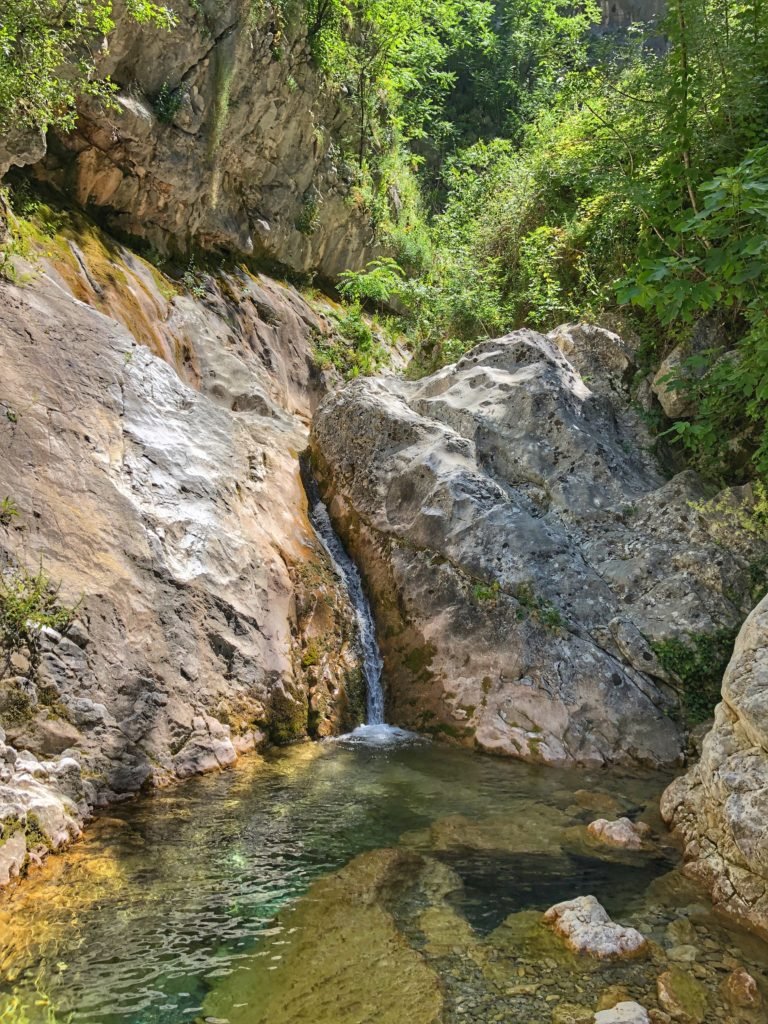
Before long, it’s easy to squeal with glee when you encounter your first swimming hole and waterfall.

Continuing to wriggle and scramble up the canyon, as it gets narrower and narrower.
And the cascading waterfalls get more and more enticing until…

…Roadblock. Suddenly you can’t continue any further without climbing equipment or without getting a little stuck…like Greg did trying to worm his way over this rock. Fortunately all was fine and we hopped our way out with no other incidents.

After four nights in Kotor (which was a perfect amount of time) we headed 20 minutes by local bus to the teacup size town of Perast, which looks like it broke off Venice and drifted down the Adriatic to park itself in Boka. We read that Perast was the “hidden gem” in Boka, but perhaps the material we read was outdated? The reality is most people get bussed here on day trips from Kotor, which makes it absolutely dreadful with crowds during the day in this compact little town. The bus traffic jams are insane and people will scam you if you try and park a car here. However, when everyone leaves during the evenings and early mornings, Perast is just perfect. This is why we’re so glad we stayed a couple nights here…to truly embrace the essence of this tiny fisherman’s village.
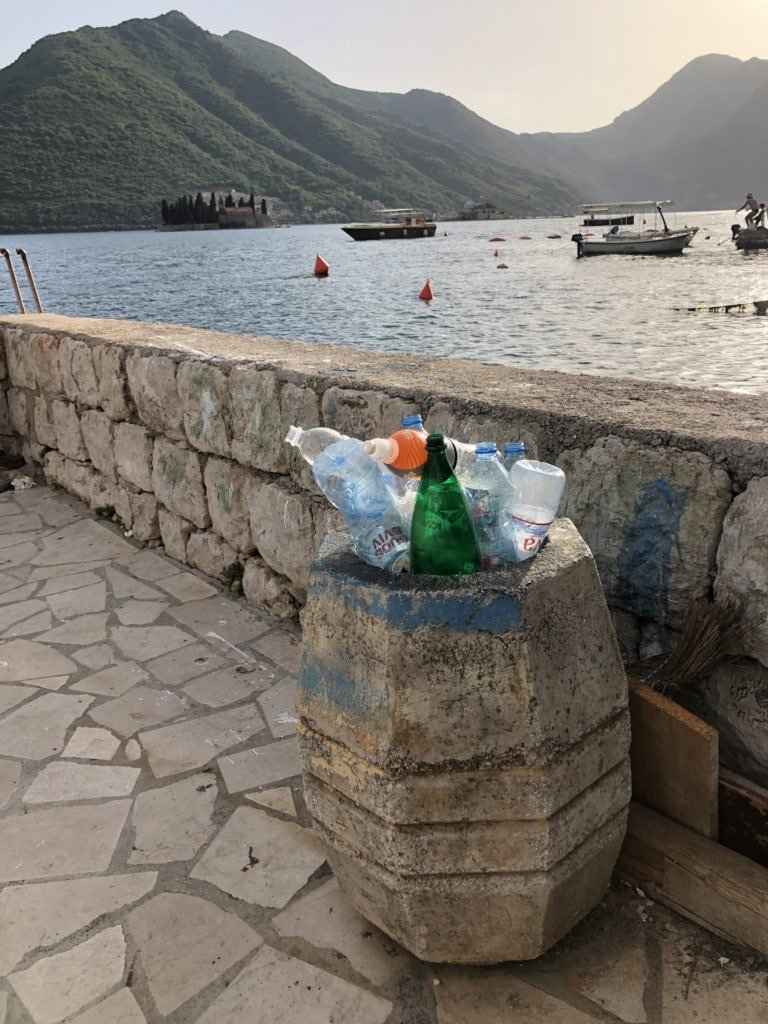
One example of the signs of too much tourism. Every single trash can, conveniently located within a single wind gust of the water, looks like this. Nearly every single person we passed had a plastic bottle. Why is it so hard to carry a reusable bottle in a place where the tap and fountain water is perfectly delicious and available?! Sorry…end rant.

Admiring Perast from our guesthouse window. Perast has its heyday between the 15th and 18th Centuries when it was shared between the Venetian Republic and Ottoman Empire, essentially a very important borderland. The settlers of Perast, protecting Venetian territory, deserved a lot of privileges. One of these was tax free trading on all Venetian markets, which made them very wealthy so they were able to invest in the stunning architecture still present today.
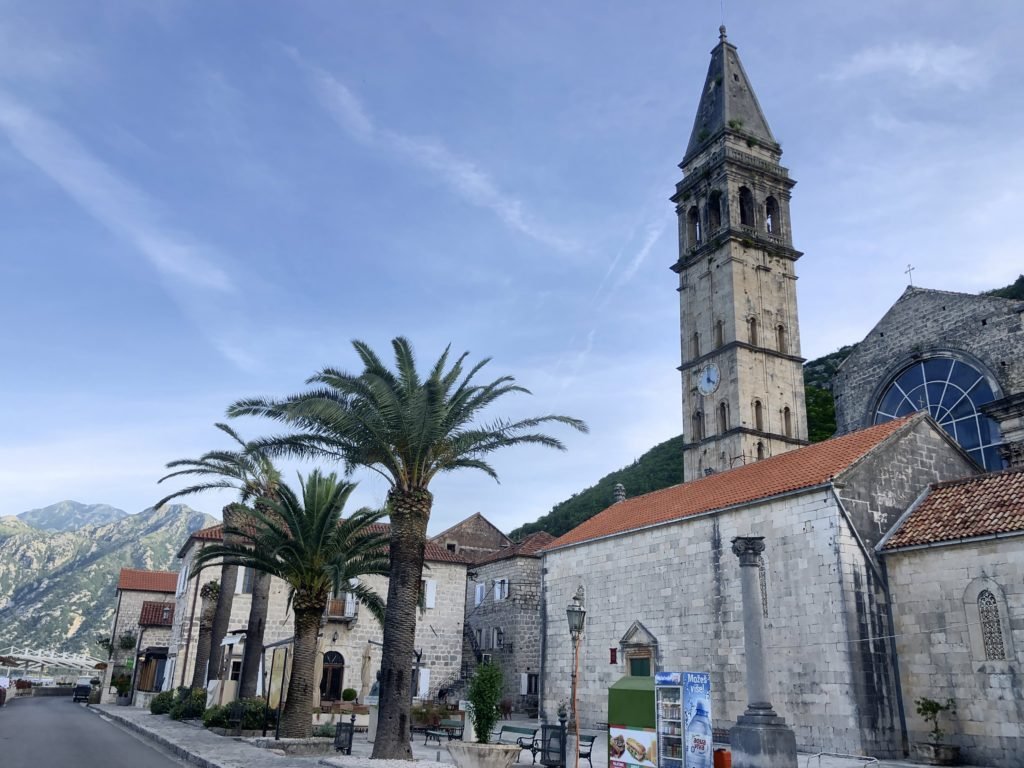
Ahhh…now you’re talking. We loved walking out of our flat and into the streets of Perast at 7 am. No people, no noise and just a few fishermen. All you could hear was the sound of the seagulls and lightly lapping water. The 55 meter tower of St. Nikola church is one of the iconic jewels of Boka.

A lazy morning in Perast when the world just feels idyllic.
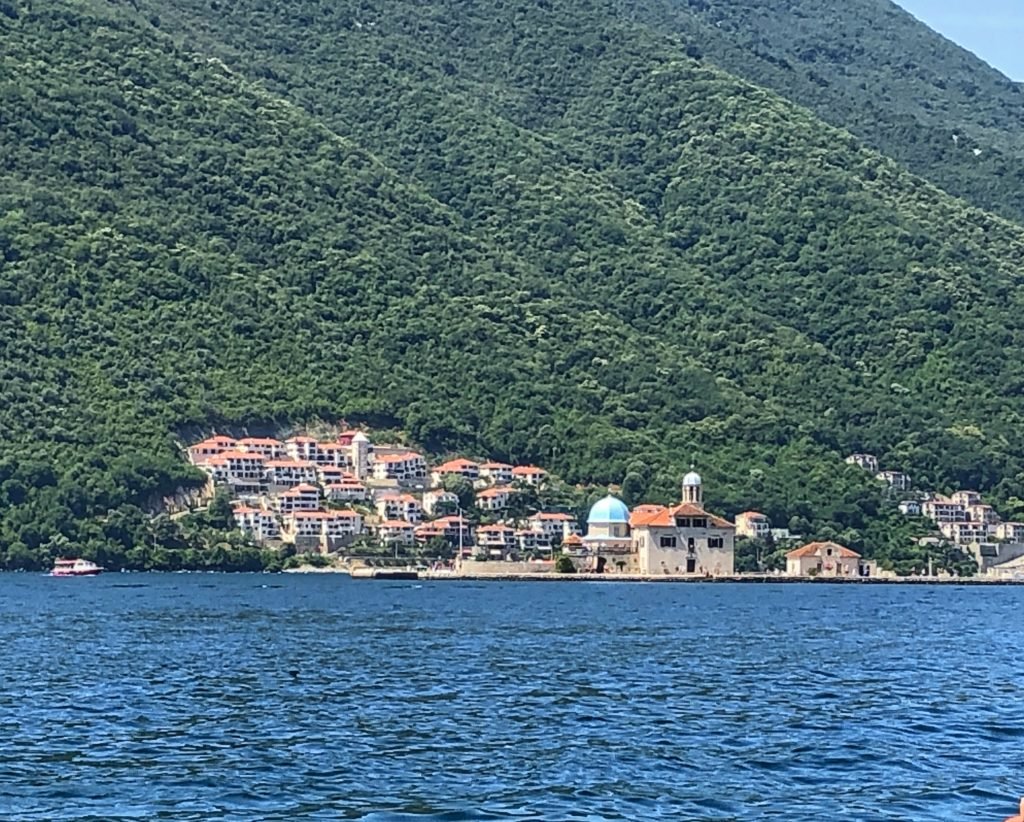
Another feature of Perast is its proximity to the islets of St. George and Our Lady of the Rocks, incredibly both churches on small islands. The bizarre thing is one of these islands is natural and the other manmade. The manmade one, on which Our Lady of the Rock is perched, was created “over the centuries by local seamen who kept an ancient oath after finding the icon of Madonna and Child in the sea in 1452. Upon returning from each successful voyage, they laid a rock in the Bay. Over time, the islet gradually emerged from the sea. The custom of throwing rocks into the sea is alive even nowadays. Every year on the sunset of July 22, an event called fašinadain the local dialect, when local residents take their boats and throw rocks into the sea, widening the surface of the island, takes place.” (Wikipedia)
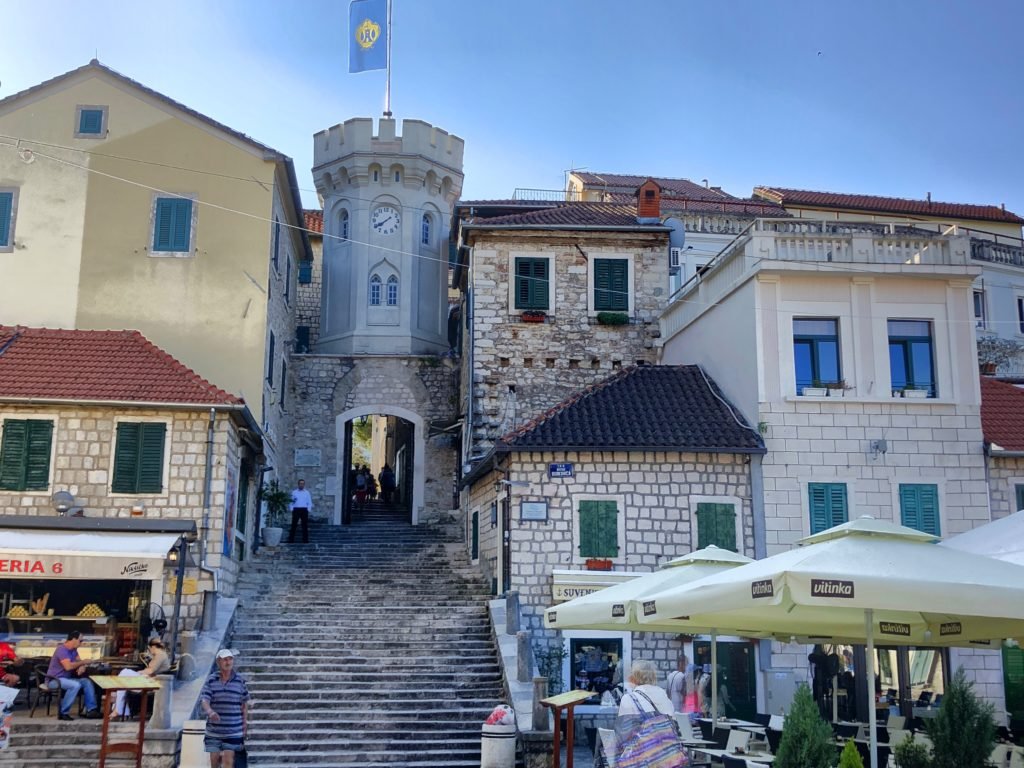
Next we moved on to the town of Herceg Novi (population 30,000) for the night, which by the way, definitely deserves at least two or three. While it’s not the most picturesque of the Boka towns, it’s undeniably pleasant and with its beaches, promenades and old charm, is the kind of place we’d love to live. (Out of our price range now though.) The Old Town, although a step into the Middle Ages, feels alive and real, not Disneyfied and touristy. It streams with locals living normal urban, life. One of the main symbols of the city is its unique Clock Tower or Sahat Kula, which is from 1667 but later modified to its Romanesque look.
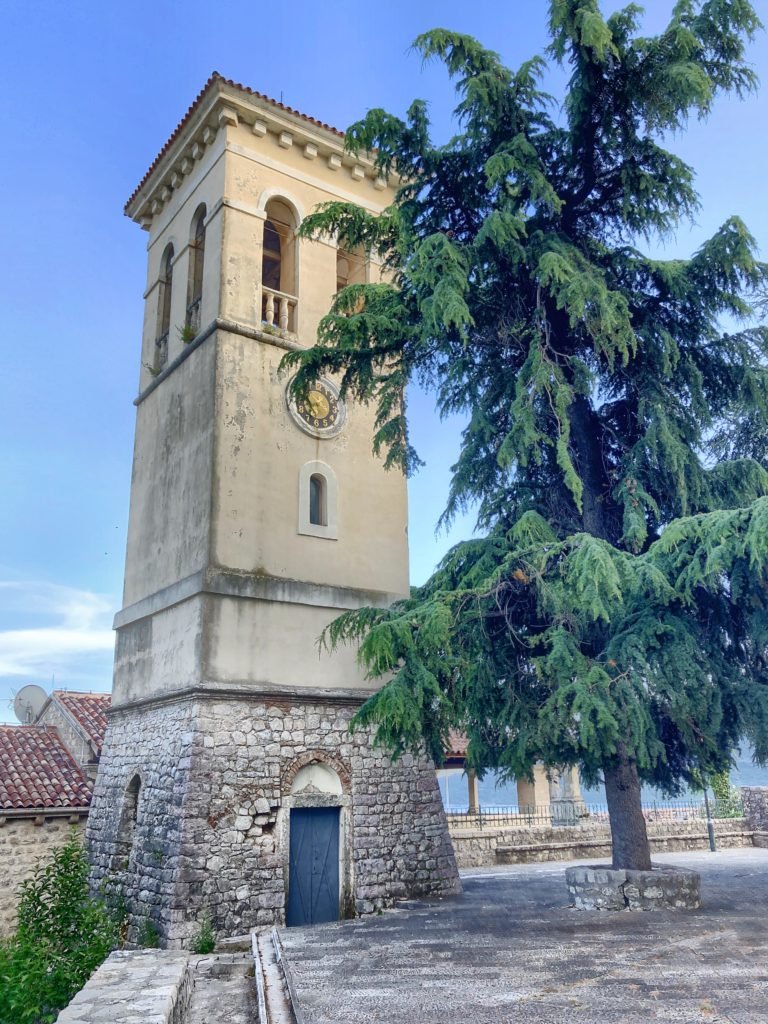
And because only the elite had iPhones in the Middle Ages, a town can never have too many clock towers to check the time.
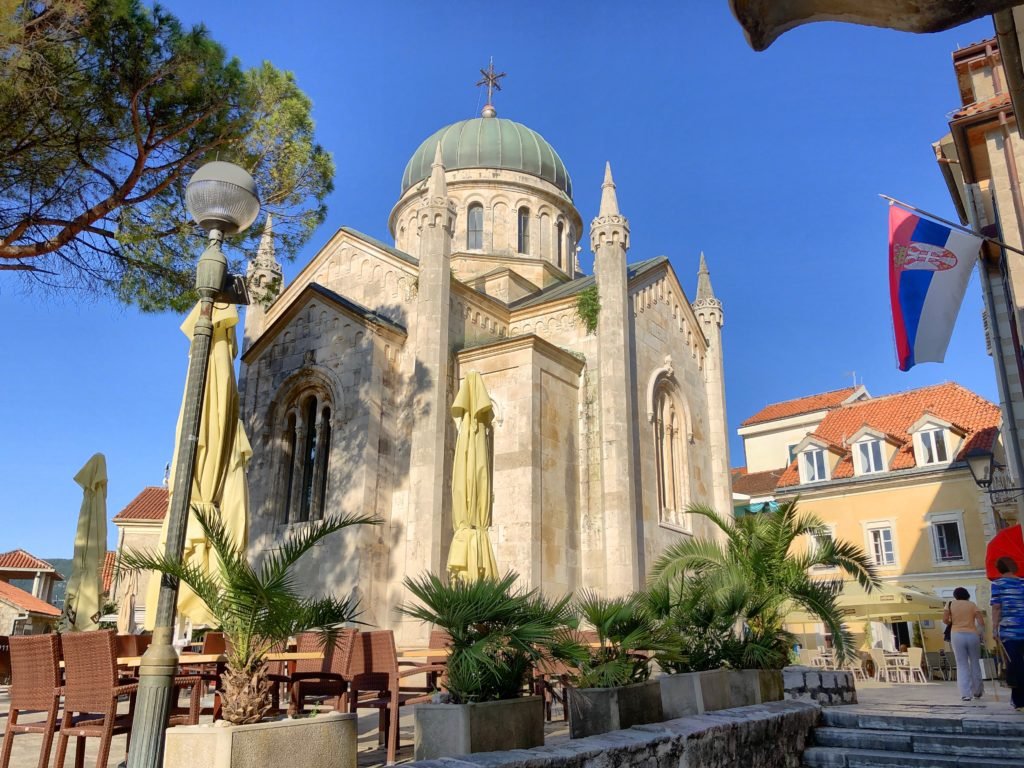
Saint Michael Archangel Church, plopped in the middle of the main square and erected during the Austro-Hungarian rule over the city.

Kanli Kula Fortress is not like most fortresses we’ve seen. It’s presence brings up images of the Wicked Witch of the West… daunting and even a little fear inducing, especially as the swallows aggressively sweep the main tower even today. Its name means Bloody Tower in Turkish and for 400 years it forebodingly guarded the city of Herceg Novi at the mouth of Boka. The “bloody” name of the fortress was purposeful, because during the reign of the Ottomans, an evil prison was settled here in which many freedom fighters of Montenegro and the opponents of Turkish occupation were tortured and killed, serving sentences, from which no one could escape.
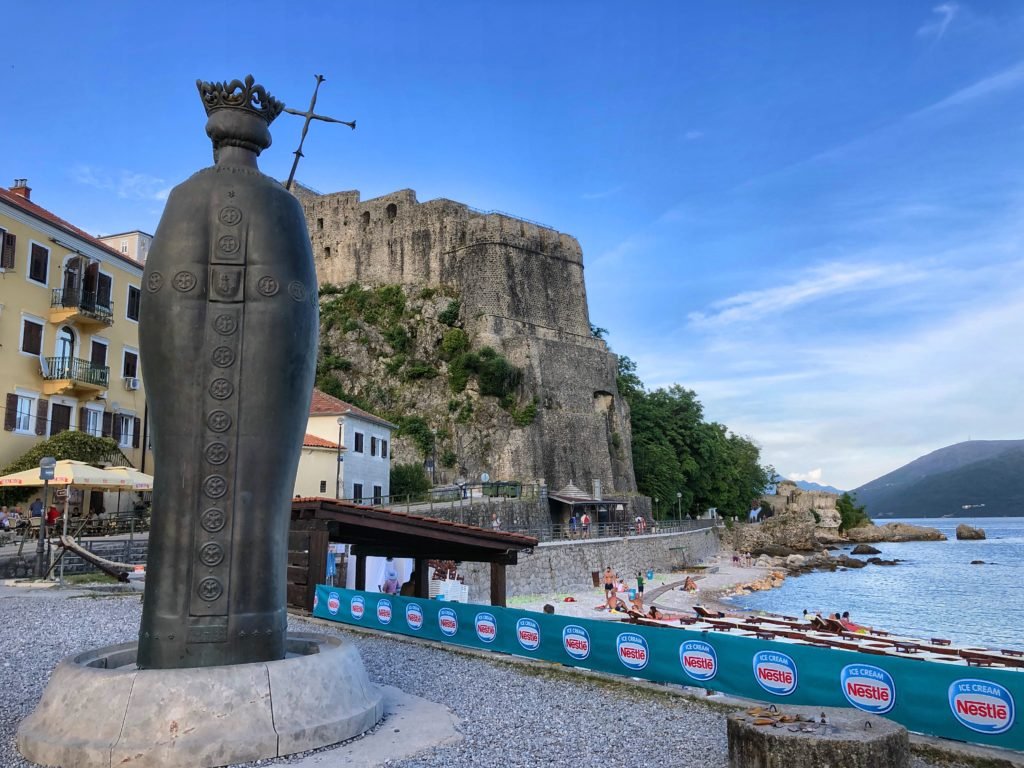
Another edge of the fortress butts against the main promenade today. This fantastic walking path, once a train line, runs 6k along the seaside town. It features many beaches, restaurants and shops. A lovely place for a nice long evening stroll. The path is also virtually flat which is a nice change of pace in what is otherwise a very hilly and stair-blanketed city.

The views are just gorgeous. Especially when you toss in the evening light. An ideal way to wrap up our time in Bay of Kotor.
Bay of Kotor Final Budget (One Week)
- Accommodation $234.14 ($33.14/night average) all private rooms
- Tourist Tax: $8
- Groceries: $46
- Transport: $10.19
- Grand Total: $298.33




